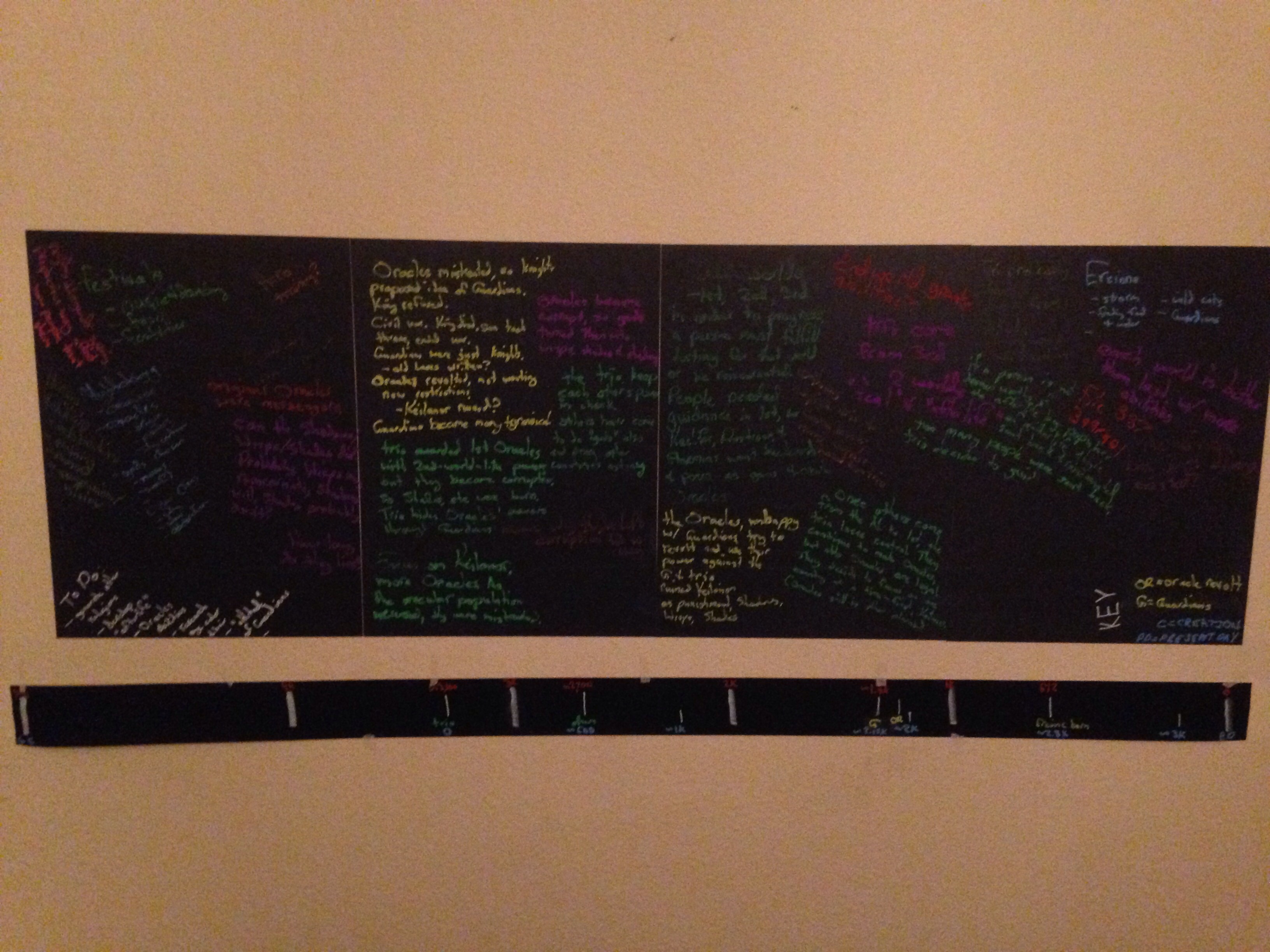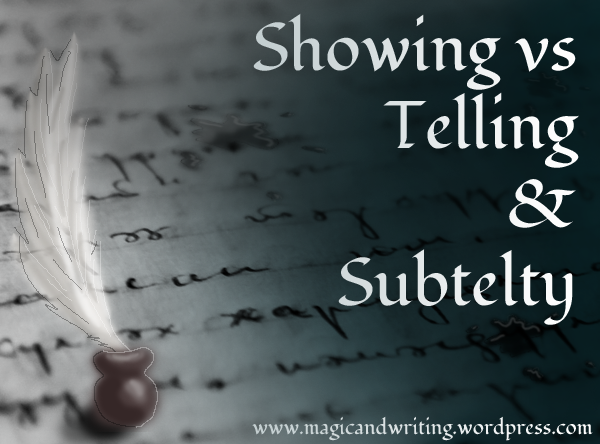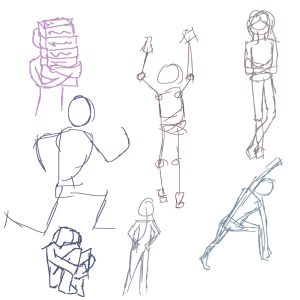And so we start the world-building again!

After deciding that I won’t start any major plot changes/revisions until after I’ve had at least one beta-reader go through my novel and give me feedback, I figured starting the world building now would be acceptable. I tried it last night, actually, and ended up instead extremely frustrated.
Today, though, proved to be much more fruitful! That blackboard was actually mostly empty this morning, and the strip underneath wasn’t there at all.
I decided that I was going to start my world building with the history. And the history, I’d start at the beginning. Yay for figuring out creation! I actually considered an idea for it, but then it developed into something else, and now I have a really, really awesome idea for my religion, and no clue how the world actually came into existence. (I’ll probably say “science” and be done with it. Because, really.)
Tomorrow I’m going to work more on fleshing out my timeline (that’s what that bottom strip is), and then next week, I’ll probably be working on research. I suck at research and my first and second draft were both written with a “I’ll pretend I know what I’m talking about and hope nobody notices” kind of attitude.
I’m pretty sure that won’t actually slide. (It actually already hasn’t, considering the culture and whatnot of my world feels very blank.) And I would like to know what I’m talking about in a few cases. So now begins the research! Yay!
That’s basically how it’s going so far.
I also happen to be procrastinating from my WIP, but hopefully that won’t last long, because I would like to finish the first draft of that.
How goes the writing for everyone else? Where do you usually start when you tackle the huge chaotic mess that is world-building?


